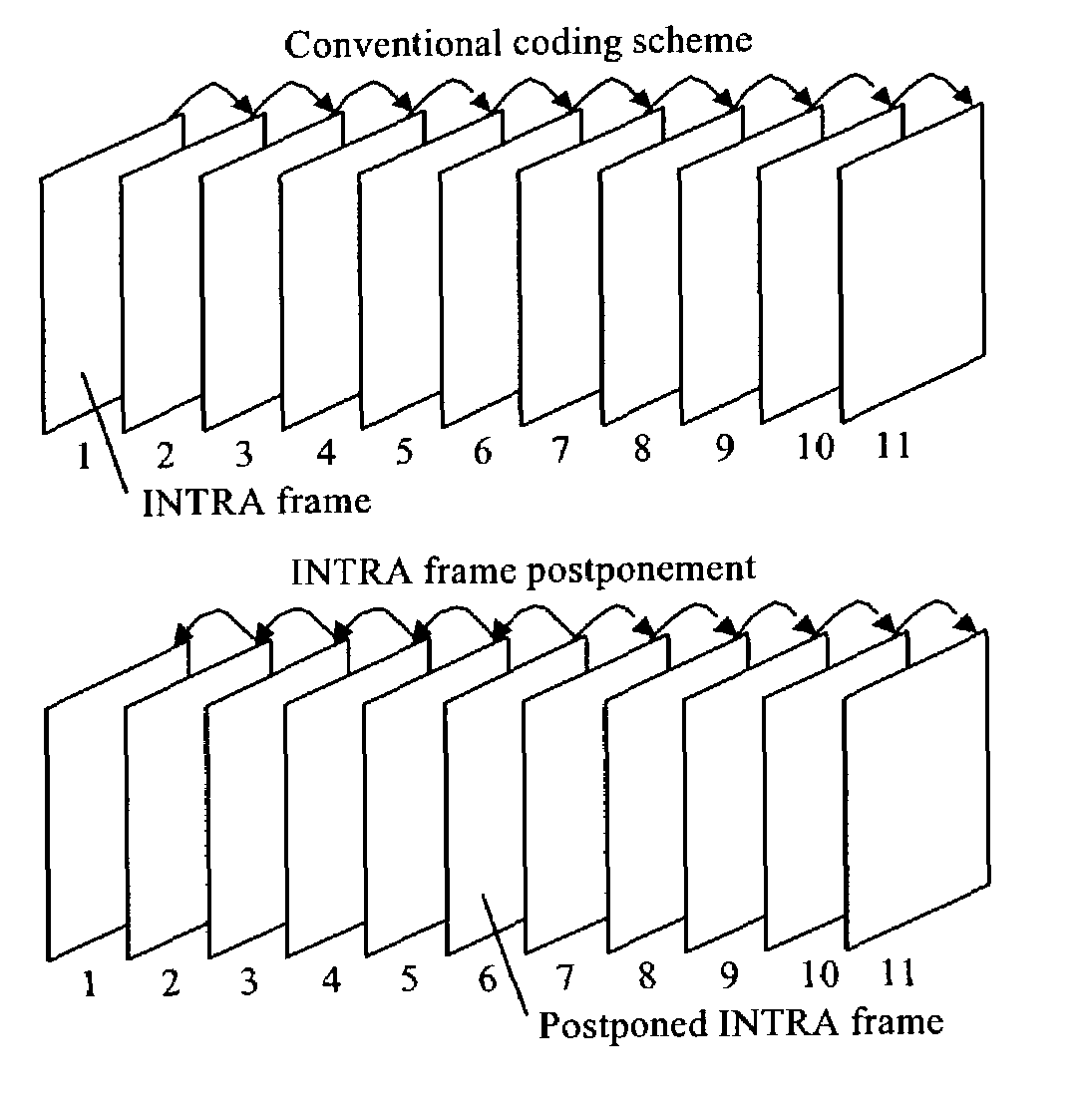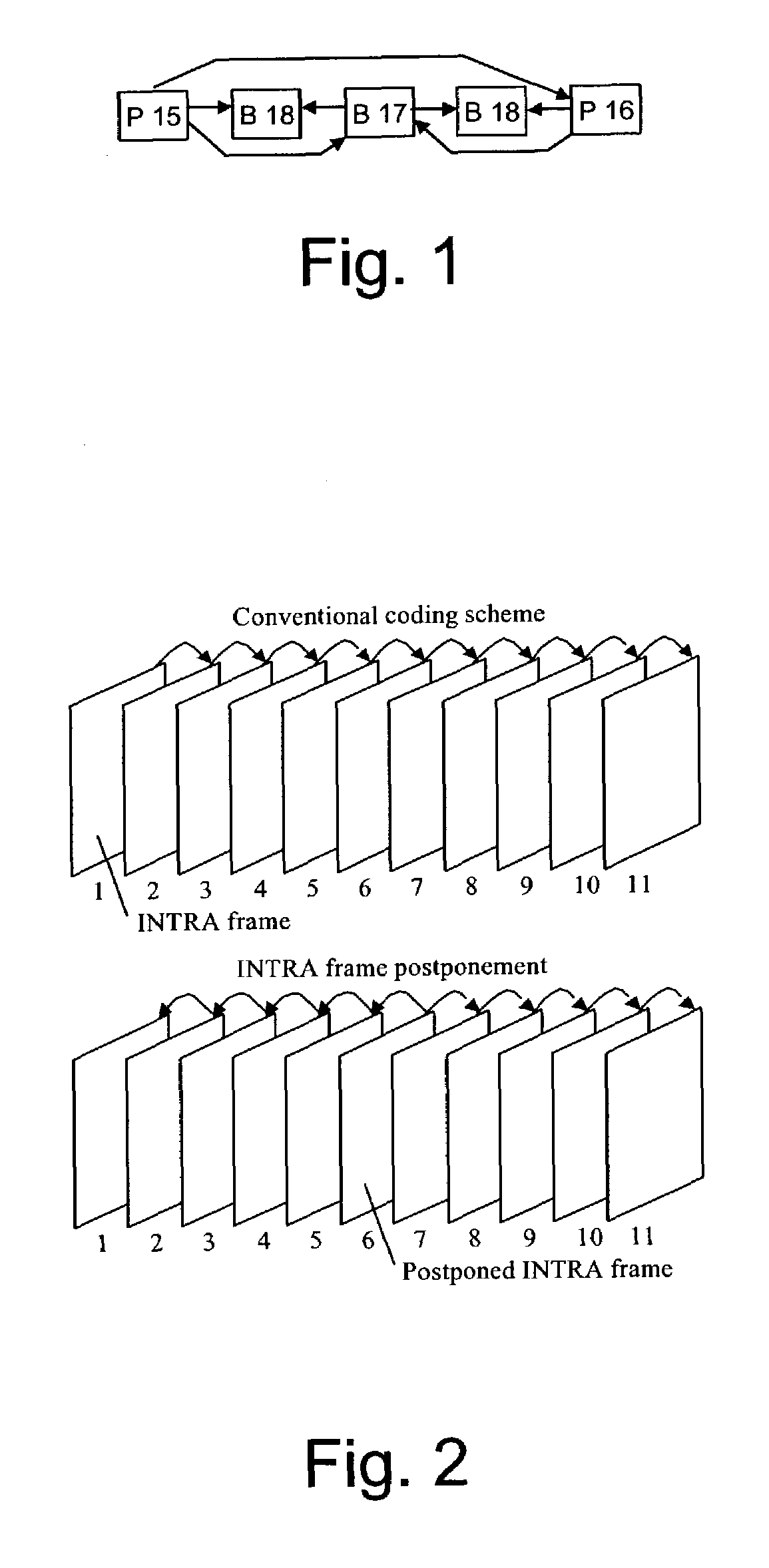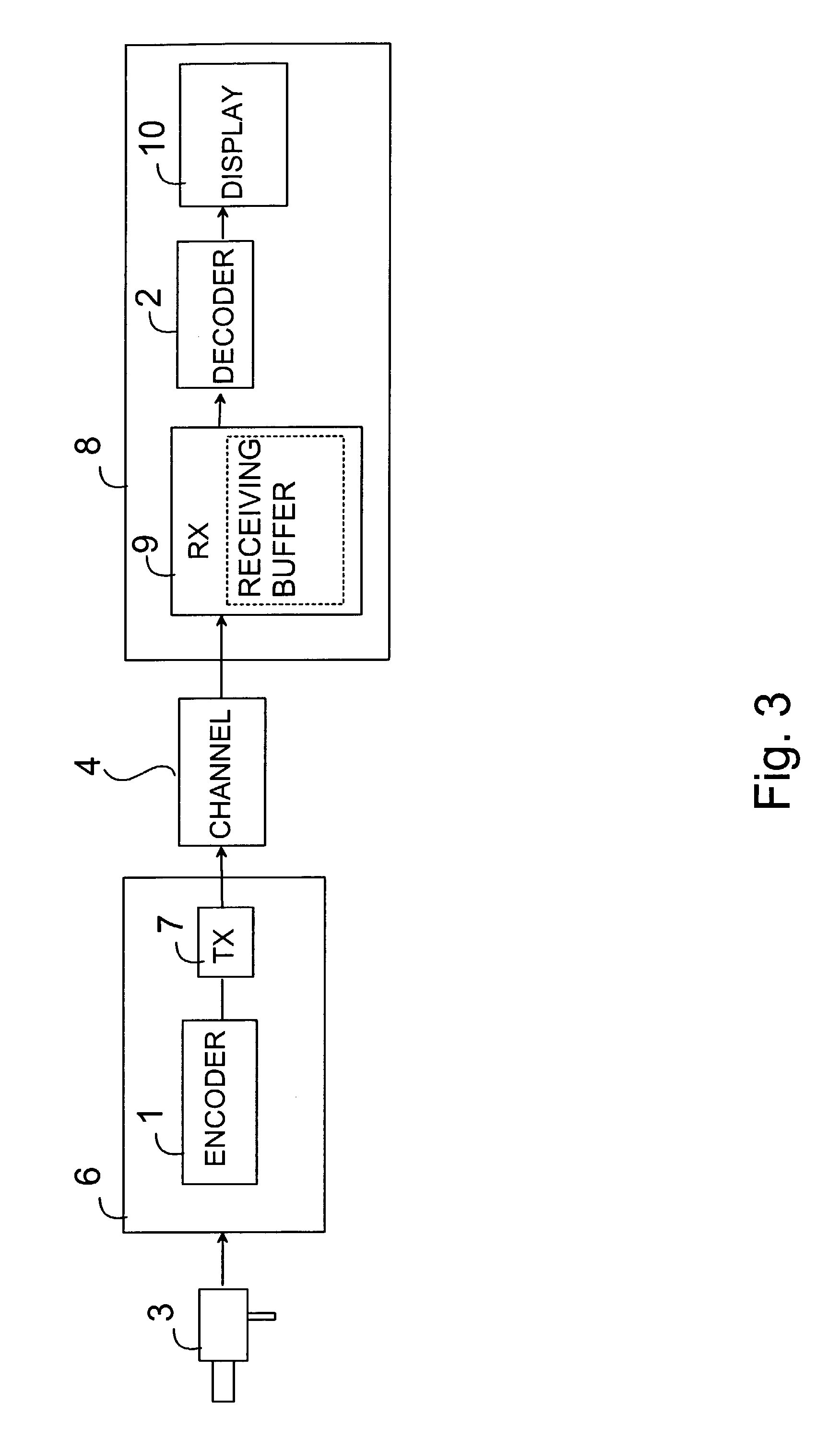Encoding picture arrangement parameter in picture bitstream
a picture and bitstream technology, applied in the field of encoding and decoding pictures, can solve the problems of transmission errors, the decoding order cannot be reconstructed from the frame numbers, and the error propagation to the rest of the inter-picture prediction chain, so as to improve compression efficiency, reduce the amount of information to be transmitted, and accelerate the transmission rate of multimedia information
- Summary
- Abstract
- Description
- Claims
- Application Information
AI Technical Summary
Benefits of technology
Problems solved by technology
Method used
Image
Examples
Embodiment Construction
[0051]In the following the invention will be described in more detail with reference to the system of FIG. 3, the encoder 1 of FIG. 4 and decoder 2 of FIG. 5. The pictures to be encoded can be, for example, pictures of a video stream from a video source 3, e.g. a camera, a video recorder, etc. The pictures (frames) of the video stream can be divided into smaller portions such as slices. The slices can further be divided into blocks. In the encoder 1 the video stream is encoded to reduce the information to be transmitted via a transmission channel 4, or to a storage media (not shown). Pictures of the video stream are input to the encoder 1. The encoder has an encoding buffer 1.1 (FIG. 4) for temporarily storing some of the pictures to be encoded. The encoder 1 also includes a memory 1.3 and a processor 1.2 in which the encoding tasks according to the invention can be applied. The memory 1.3 and the processor 1.2 can be common with the transmitting device 6 or the transmitting device ...
PUM
 Login to View More
Login to View More Abstract
Description
Claims
Application Information
 Login to View More
Login to View More - R&D
- Intellectual Property
- Life Sciences
- Materials
- Tech Scout
- Unparalleled Data Quality
- Higher Quality Content
- 60% Fewer Hallucinations
Browse by: Latest US Patents, China's latest patents, Technical Efficacy Thesaurus, Application Domain, Technology Topic, Popular Technical Reports.
© 2025 PatSnap. All rights reserved.Legal|Privacy policy|Modern Slavery Act Transparency Statement|Sitemap|About US| Contact US: help@patsnap.com



